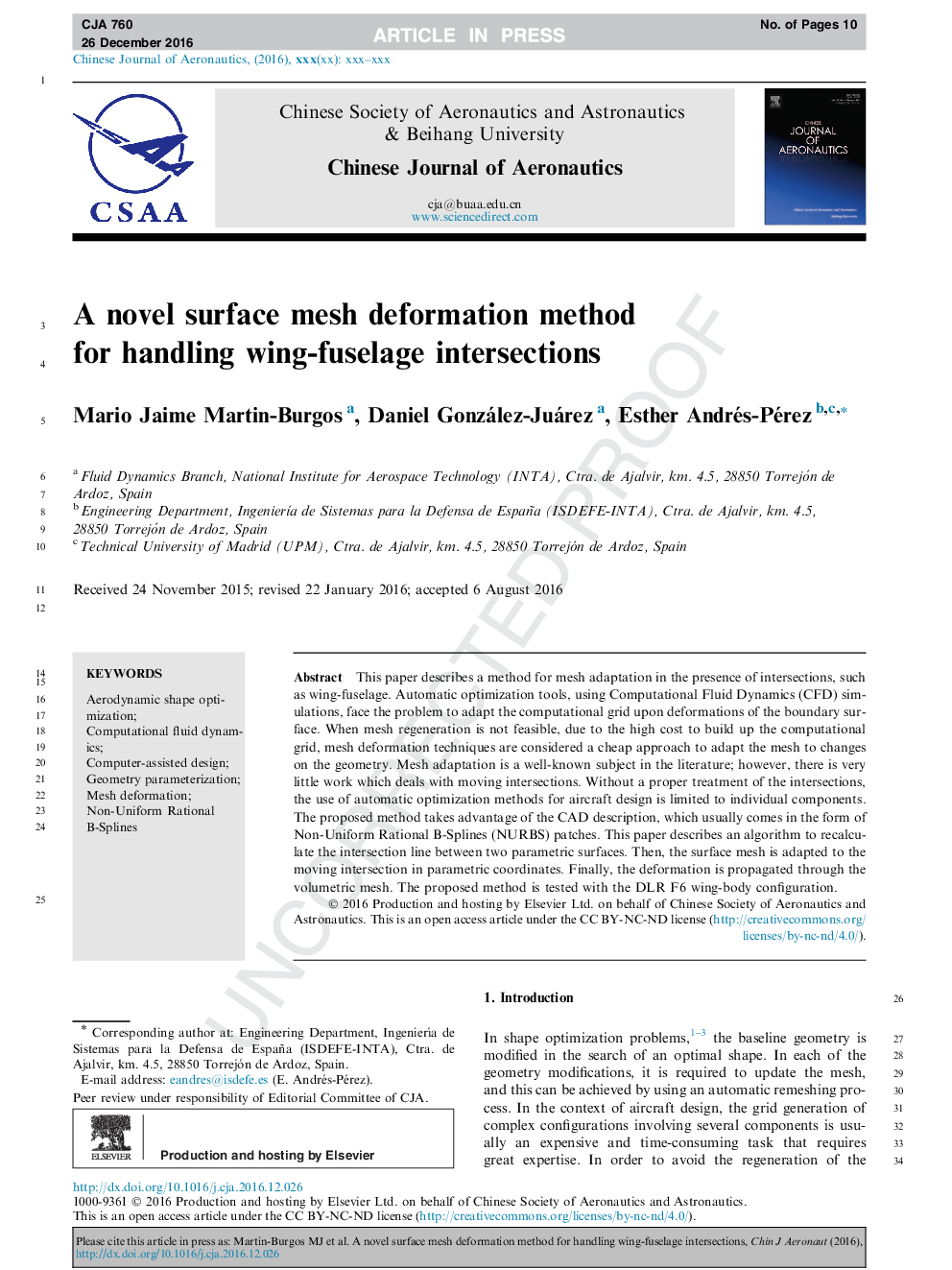| Article ID | Journal | Published Year | Pages | File Type |
|---|---|---|---|---|
| 7154182 | Chinese Journal of Aeronautics | 2017 | 10 Pages |
Abstract
This paper describes a method for mesh adaptation in the presence of intersections, such as wing-fuselage. Automatic optimization tools, using Computational Fluid Dynamics (CFD) simulations, face the problem to adapt the computational grid upon deformations of the boundary surface. When mesh regeneration is not feasible, due to the high cost to build up the computational grid, mesh deformation techniques are considered a cheap approach to adapt the mesh to changes on the geometry. Mesh adaptation is a well-known subject in the literature; however, there is very little work which deals with moving intersections. Without a proper treatment of the intersections, the use of automatic optimization methods for aircraft design is limited to individual components. The proposed method takes advantage of the CAD description, which usually comes in the form of Non-Uniform Rational B-Splines (NURBS) patches. This paper describes an algorithm to recalculate the intersection line between two parametric surfaces. Then, the surface mesh is adapted to the moving intersection in parametric coordinates. Finally, the deformation is propagated through the volumetric mesh. The proposed method is tested with the DLR F6 wing-body configuration.
Keywords
Related Topics
Physical Sciences and Engineering
Engineering
Aerospace Engineering
Authors
Mario Jaime Martin-Burgos, Daniel González-Juárez, Esther Andrés-Pérez,
